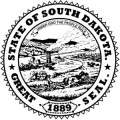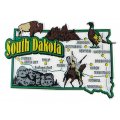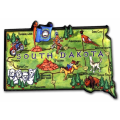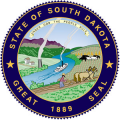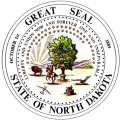An associate’s degree in nursing (ADN) provides entry into registered nursing (RN) with significantly less time and financial investment than a bachelor of science in nursing (BSN). Requiring just two years of fulltime study, ADN programs provide the quickest pathway for South Dakota’s aspiring RNs to enter the workforce.
ADN program overview
Latest articles
Affordable and brief, a licensed practical nursing (LPN) certificate program is the preferred pathway for many aspiring nurses. These programs provide the medical training students need to pass the NCLEX-PN national licensure exam and quickly enter the workforce.
Overview of LPN programs
Tuition fees are a significant expense for potential nursing students. Costs can vary greatly based on several factors, including geographic location, nursing role (certified nursing assistant vs. licensed practical nurse vs. registered nurse), and program length (certificate vs. associate’s degree vs. bachelor’s degree). Costs will also differ significantly depending on whether or not the school receives public funding. For example, Augustana College, a large private school with 1,700 enrollees, costs more than $37,000 per year to attend.
Career opportunities, prestige, and a first-class education are just a few of the winning characteristics of private nursing schools. For aspiring nurses who want a nurturing learning environment, a private school might be the best option. Before taking the plunge, learn more about private nursing schools and what they have to offer.
Overview of private nursing schools
South Dakota’s public nursing schools are well-known for offering first-rate yet affordable education. The state is home to a handful of public colleges and universities with accredited nursing programs. Like private nursing schools, public schools offer several education pathways that require anywhere from a few months to a few years for completion.
Overview of public nursing schools
South Dakota is home to a variety of nursing programs, making it one of the most appealing places for aspiring nursing students. To make an informed choice about their future career path, prospective students should understand the different types of programs available. Two of the most common are licensed practical nursing (LPN) certificate programs and registered nursing (RN) degree programs.
Licensed practical nurses
There are several common nursing roles in the United States, including certified nursing assistant (CNA), licensed practical nurse (LPN), and registered nurse (RN). Registered nurses comprise the largest group of nursing professionals, with more than 17,000 RNs employed in Nevada alone. The role’s popularity may be due in part to its attractive salary: Nevada’s RNs earn almost $80,000 per year on average.
Associate’s degree in nursing overview
Licensed practical nurse (LPN) is one of four nursing roles in the country’s healthcare system. Most LPNs are generalists in charge of taking vitals, administering basic care such as changing bandages, and keeping patients’ records. Typically, LPNs work under the supervision of registered nurses (RNs), who are more senior and carry added responsibilities such as independently administering medication. LPNs work in various healthcare settings such as hospitals, offices of physicians, nursing care facilities, and private homes.
LPN training programs
With major employers like St. Rose Dominican Hospitals, the Department of Veterans Affairs, and Genesis HealthCare on the lookout for new nurses, Nevada’s healthcare job market is very robust. The Bureau of Labor Statistics predicts a shortfall of registered nurses (RNs) within ten years. This shortfall will be felt in all sectors of the healthcare industry, including hospitals, long-term care facilities, hospices, the military, and insurance providers.
Nursing programs overview
North Dakota’s expanding healthcare industry is creating many opportunities for aspiring nurses. The state has programs of study for three nursing roles: certified nursing assistant (CNA), licensed practical nurse (LPN), and registered nurse (RN).
Nursing assistants can complete a brief training program in just a few months. CNAs help sick and injured patients complete critical tasks like dressing, eating, and moving around. North Dakota has 7,000 licensed CNAs who earn a median annual salary of approximately $28,000.

